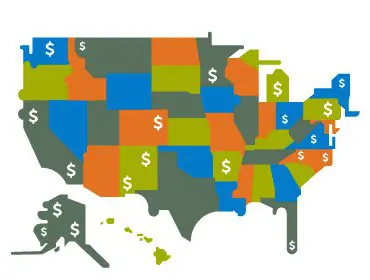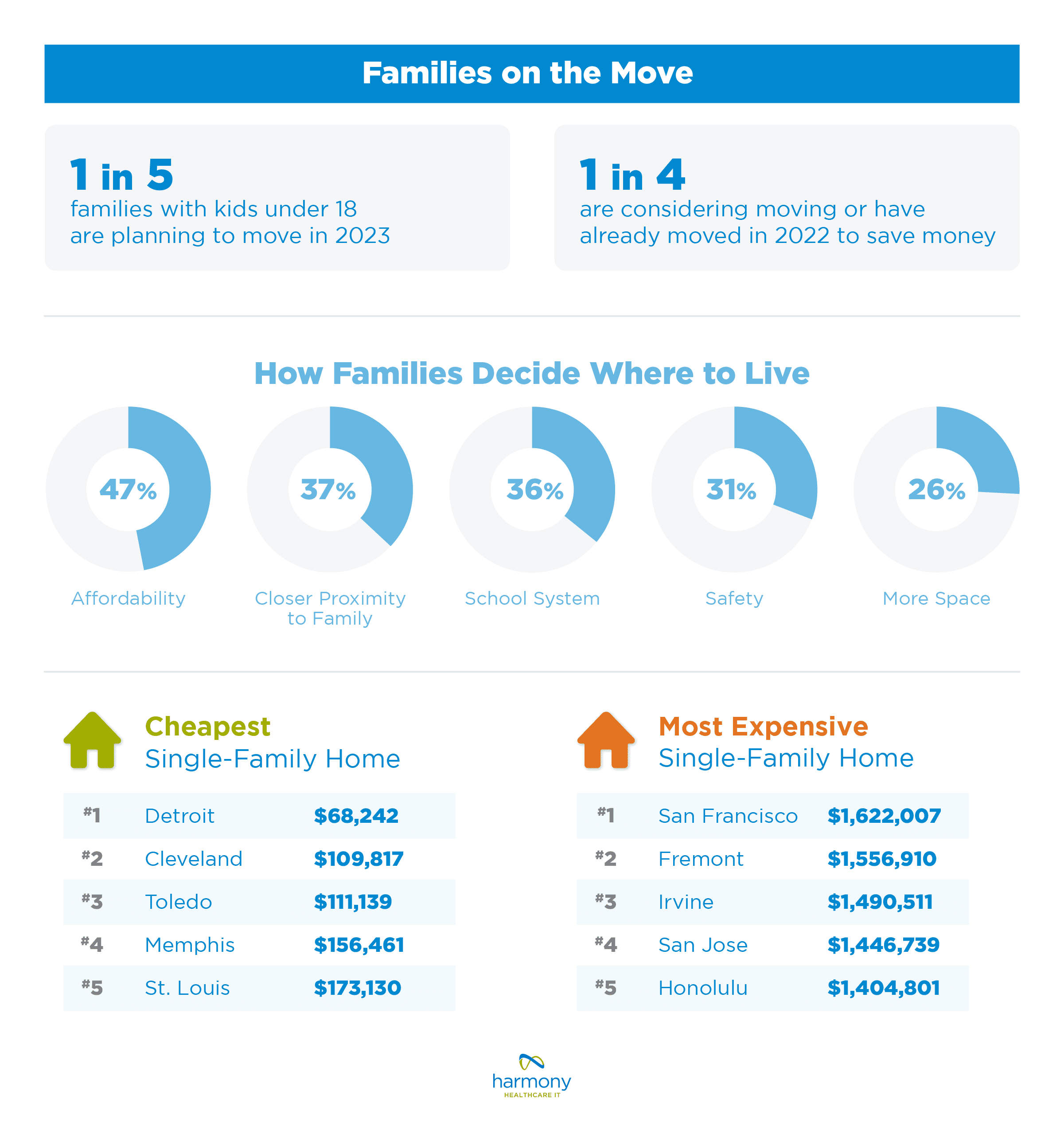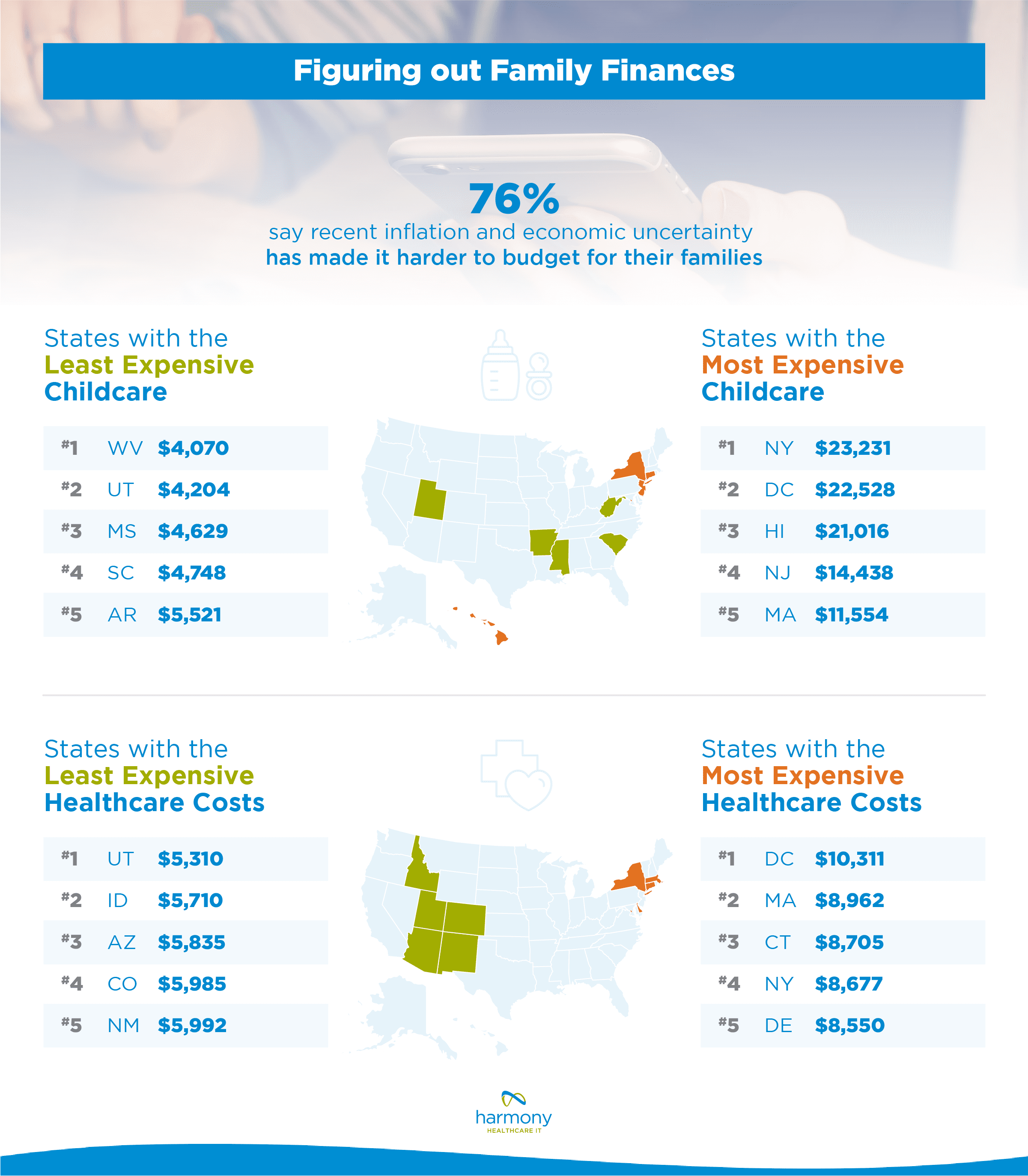
New Report on Expensive and Inexpensive Cities
It’s an expensive time to be living in America. Add in children and it costs even more. But one good thing to come out of the pandemic is that many families are no longer tied down to one location because of a job. Fully remote positions along with hybrid roles are giving families more flexibility to live in more affordable places.
But where should families move? Our new report aims to find some of the most and least expensive cities to raise a family in 2023 by looking at a variety of data including the cost of living, education, childcare, crime, healthcare, and housing. We compared the 100 most populous cities in the U.S. to come up with this list.
Top 10 Most & Least Expensive Cities

When it comes to cost, two states reigned supreme as the best places to raise a family: Arizona and Texas. Gilbert and Chandler in Arizona topped the list as the least expensive places in the U.S., and Phoenix wasn’t too far behind along with Mesa.
The Phoenix region has the lowest monthly food and beverage index (per the Consumer Price Index) across the country. Also, it costs an average $5,835 annually for personal healthcare, dental services, and prescription drugs in the state. That’s the lowest healthcare cost in the nation behind Boise City, Idaho, which pays an average $5,710 annually in healthcare costs.
Meanwhile in Texas, four cities made the top 10: Plano, Irving, Garland, and Fort Worth. Other affordable cities include Omaha and Lincoln, Nebraska, and Wichita, Kansas.
As for the most expensive cities, while it may be easy on the eyes, California is not easy on your wallet. San Diego and Chula Vista tied for the most expensive cities in the U.S. to raise a family. Both cities ranked the worst for gas prices (the state average is $6.25). They also had the worst apparel and recreation costs per the Consumer Price Index.
They weren’t the only California cities on the list of the most expensive cities to live. Oakland, Los Angeles, and Stockton are also some of the most expensive places to raise a family.
Outside of California – Washington D.C., New York City, and Honolulu are also costly. These cities have some of the highest costs in the nation for childcare and healthcare.
Finding the Perfect Family Home

According to our survey of 1,000 Americans, many families are getting ready to move. Nearly 1 in 5 (17%) parents admitted they are planning to move in 2023. More than 1 in 4 (26%) have already moved in 2022 or considered moving to save money.
The main draw for families looking for homes is affordability. Nearly half (47%) said that’s the top factor when deciding where to live. Other reasons are to be closer to family, the school system, safety, and more space.
Of the 10 most populous cities in the U.S., the city with the cheapest single-family home is Detroit where people pay an average $68,242. However, it is the worst city in the nation for safety according to FBI crime data. Detroit has 1,938 violent crimes annually per capita. To put that into perspective, the average number of violent crimes across the 100 most populous cities is just 691.
The other cheapest cities when it comes to single-family homes are Cleveland, Toledo, Memphis, and St. Louis. All cities have an average price of less than $175,000 for a single-family home.
People have to drop more than a million bucks in cities with the most expensive single-family homes in the nation. The top four cities are all in California. In San Francisco, the average price is $1,622,007. Honolulu ranked 5th most expensive with an average price of $1,404,801.
The Cost to Raise a Family

Nearly 4 in 5 (76%) parents say inflation and recent economic uncertainty have made it harder to budget for their families. Inflation has impacted everything from prices at the grocery store to gas. On top of those costs, families also have to pay for childcare and healthcare.
New York has the most expensive childcare costs. On average, families are shelling out $23,231 annually for it. Washington D.C. isn’t far behind with $22,528 and parents pay about $21,016 annually in Hawaii.
Meanwhile, the most affordable childcare is in West Virginia, Utah, Mississippi, South Carolina, and Arkansas. However, it’s still not cheap. The cheapest state is West Virginia where parents pay $4,070 annually which comes down to about $339 a month.
As for healthcare costs, Washington D.C. once again tops the list for the worst prices. On average, people pay $10,311 yearly in D.C. nearly double what people in Utah pay ($5,310). Utah is the least expensive state in the nation when it comes to healthcare.
Regionally, healthcare costs on the East Coast are the most expensive with the top five states all located along the East Coast. All five states with the lowest healthcare costs are located out West (Utah, Idaho, Arizona, Colorado, New Mexico).
Families have more options to move to cheaper states now more than ever before. With increased work-from-home opportunities and hybrid roles, parents can look for more affordable places to raise their children comfortably. There are a lot of options available to find the best one for your family.
Methodology
To come up with the national rankings we analyzed the 100 most populous cities in America. To determine our ranking, we compared the cities across five key metrics on a 100-point scale. The five key metrics were:
- Cost of Living – 40 points overall
- Food & Drink – 10 points
- Gas Prices – 10 points
- Apparel – 10 points
- Recreation – 10 points
- Crime Rate – 5 points overall
- Education & Childcare – 25 points overall
- Child Care costs by state – 15 points
- School enrollment – 5 points
- Educational attainment – 5 points
- Healthcare – 10 points overall
- Housing – 20 points overall
- Average price of a single-family home – 15 points
- Median household income – 5 points
Sources include the U.S Census Bureau (median household income 2016-2020, 2021 educational attainment by city, 2021 school enrollment by city, the average annual amount paid for child care by state 2022 ), AAA (2022 gas prices by state), Centers for Medicare and Medicaid Services (average cost of health care, dental care, and prescription drugs from 1991-2020), Bureau of Labor Statistics (2022 consumer price index of food and drinks, apparel, and recreation), Zillow (September 2022 average single-family home prices by city), and FBI (2019 offenses known to law enforcement).
In October 2022, we also surveyed 1,001 Americans including 246 parents with kids under 18 years old about their current home and potential moves planned. Survey respondents ranged in age from 18 to 83 with an average age of 38. 49% were men, 49% women, and 2% transgender.
For media inquiries, please contact media@digitalthirdcoast.net.
Fair Use
When using this data and research, please attribute by linking to this study and citing Harmony Healthcare IT.






